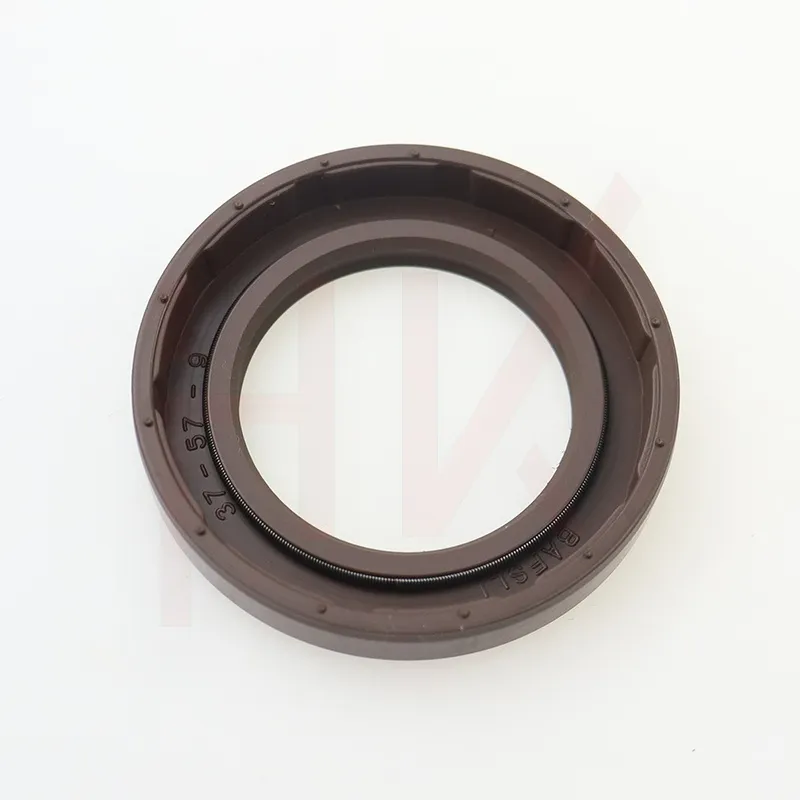ನವೆಂ . 18, 2024 14:27 Back to list
Design and Function of Cylinder Gland Seals in Hydraulic Systems
Understanding Cylinder Gland Seals Importance and Applications
Cylinder gland seals are crucial components in various hydraulic and pneumatic systems. They play an essential role in ensuring the efficient operation of machinery by preventing fluid leakage between moving parts. The design and integrity of these seals directly impact the performance and longevity of equipment, making their understanding vital for engineers and maintenance professionals alike.
What is a Cylinder Gland Seal?
A cylinder gland seal is a specific type of sealing solution utilized primarily in hydraulic cylinders. These seals are located in the gland area of a cylinder, where the piston rod exits the cylinder body. Their primary function is to maintain pressure within the system while minimizing the escape of hydraulic fluid. By creating a barrier between the external environment and the internal system, these seals help enhance the system's efficiency and reliability.
Types of Cylinder Gland Seals
There are several types of cylinder gland seals, each with unique properties and applications
1. U-Cup Seals U-cup seals are one of the most commonly used types. They feature a U-shaped cross-section that allows for effective sealing under pressure. This design enables them to accommodate slight misalignments and surface imperfections, making them suitable for a wide range of applications.
2. O-Ring Seals O-rings are simple yet effective sealing solutions. They can be used in static and dynamic applications, providing good sealing performance under varying pressure conditions. However, O-rings may not perform well in high-pressure situations or where significant motion is involved.
3. Lip Seals Lip seals consist of a flexible lip that contacts the piston rod, preventing fluid leakage. They are often used when high-speed movement is required, as they can handle significant dynamic forces.
4. Composite Seals These seals combine various materials to enhance performance. For example, a composite seal might feature a plastic base with a rubber lip. This design aims to provide durability while maintaining flexibility.
Importance of Proper Seal Design
cylinder gland seal

The design of cylinder gland seals must be carefully considered to ensure optimal performance
. Key factors influencing seal design include material selection, geometry, and operating conditions. The right material must be chosen based on the specific fluid being sealed, the operating temperature, and exposure to environmental factors such as moisture or chemicals.Moreover, the geometry of the seal impacts its ability to handle pressure and motion. A well-designed seal will withstand the dynamism of the system while minimizing wear and tear. Engineers often utilize advanced simulation tools to analyze seal behavior and optimize designs for specific applications.
Common Applications
Cylinder gland seals find extensive use in various industries, such as automotive, aerospace, construction, and manufacturing. In hydraulic systems, where they help control the movement of machinery and equipment, their reliability is paramount. For example, in excavators, cylinder gland seals prevent hydraulic fluid from leaking when the boom and arm extend and retract. Similarly, in automotive brake systems, these seals ensure that hydraulic pressure is maintained for effective braking performance.
In the aerospace sector, reliable sealing solutions are critical, as they help ensure the safety and efficiency of aircraft hydraulic systems. Any failure in these seals can lead to catastrophic consequences, highlighting the necessity for robust seal designs.
Maintenance and Best Practices
To maintain the longevity of cylinder gland seals, regular inspection and maintenance are crucial. Operators should monitor for signs of wear or fluid leakage, which can indicate seal degradation. The environment where these seals operate should also be kept clean and free of debris, which can lead to premature wear.
Additionally, using the right lubricant can significantly extend seal life. Operators must understand the specific requirements of their hydraulic or pneumatic systems to choose compatible lubricants that do not compromise seal integrity.
Conclusion
In summary, cylinder gland seals are integral components in hydraulic and pneumatic systems, serving as the first line of defense against fluid leakage. Understanding the various types, proper design considerations, and maintenance practices can significantly impact the performance and reliability of machinery across industries. With continuous advancements in materials and design technologies, the future of cylinder gland seals looks promising, ensuring they will remain vital in modern engineering applications.
-
TCN Oil Seal Metal Ring Reinforcement for Heavy Machinery
NewsJul.25,2025
-
Rotary Lip Seal Spring-Loaded Design for High-Speed Applications
NewsJul.25,2025
-
Hydraulic Cylinder Seals Polyurethane Material for High-Impact Jobs
NewsJul.25,2025
-
High Pressure Oil Seal Polyurethane Coating Wear Resistance
NewsJul.25,2025
-
Dust Proof Seal Double Lip Design for Construction Equipment
NewsJul.25,2025
-
Hub Seal Polyurethane Wear Resistance in Agricultural Vehicles
NewsJul.25,2025
-
The Trans-formative Journey of Wheel Hub Oil Seals
NewsJun.06,2025
Products categories
















